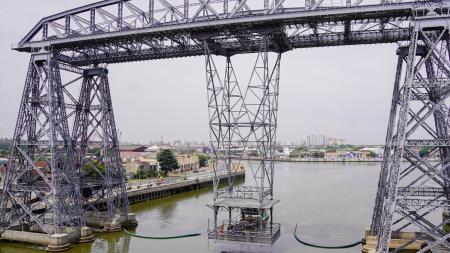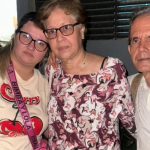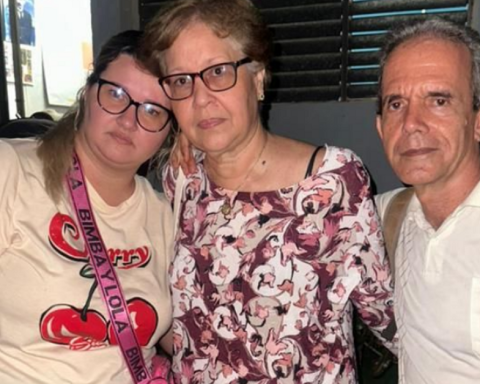The ferry bridge Nicolás Avellanedawhich connects the neighborhood of La Boca with the south of the Buenos Aires suburbs, unique in South America due to its characteristics, returned to work on Friday to form part of a tourist-environmental circuitfor which two stations were installed where information will be given to visitors
The initiative, called “The Bridge and its two shores” proposes an environmental tourist circuit from where it will be possible to access a new perspective of the river and the cultural, architectural, historical and natural heritage present in the area.
The shuttle will run on friday Y saturdays from 10 a.m. to 4 p.m., with the exception of rainy days, intense winds or electrical storms and can be used by 25 people on each trip, leaving each shore every 30 minutes. By the end of each day, the shuttle will have made 13 trips with a total of 325 people.
The commissioning of the bridge
The commissioning was carried out by the Authority of the Matanza Riachuelo Basin (Acumar), the Ministry of Tourism and Sports of the Nation, National Highway, the Government of the province of Buenos Aires, the Municipality of Avellaneda and the Commune 4 of The city of Buenos Aires.
The Environmental Promotion and Interpretation Stations (EPIAS) They will be located on both sides of the ferry, to inform the community about the two shores circuit, the recovery of the Matanza Riachuelo Basin and its historical and cultural heritage. They will also function as a base and starting point for environmental tourist circuits and purchase tickets for the crossing.
For its part, National Highway is carrying out a work of enhancement of pedestrian walkways of the Nicolás Avellaneda bridge on both sides, which allows those who cross the ferry to return along the pedestrian path and appreciate the entire structure from other perspectives. The work is at an important degree of progress on the footbridge that goes upstream.
“One of the objectives that we seek with this proposal is to integrate both banks of the river. For many years the Riachuelo was considered only as a limit between districts and that had negative consequences in environmental terms,” he said. Martin Sabatelladirector of Acumar.
“One of the objectives we seek with this proposal is to integrate both banks of the riverMartin Sabatella
“Today we want to invite you to think of it as the central point of a sustainable tourist tour, which also promotes the creation of new green jobs, and contributes to local development,” he added.
The manager of National Highway, Frederick Stizhighlighted the “pride of putting back into operation the ferry that more than 100 years ago collaborated in the integration of both communities on both sides of the banks of the Riachuelo Basin.”
“90 years ago, Vialidad Nacional set out to connect roads to promote the productive and social development of the regions. Today we continue with this management axis, executing works throughout the country and valuing a historic structure such as the Nicolás Avellaneda Ferry , which will enhance the tourist development of La Boca and Maciel Island,” he added.
Meanwhile, the Undersecretary of Quality, Accessibility and Sustainability of National Tourism, Ines Albergucciexpressed: “With the Environmental Promotion and Interpretation Stations and the commissioning of the Transporter Bridge, which is the only one in South America and one of the eight in the world, we are making the contribution that tourism can make to job creation a reality. and promotion of local development”.
The Matanza-Riachuelo Basin It covers a territory of more than 2,000 square kilometers within the Metropolitan Area of Buenos Aires and encompasses the jurisdictions of fourteen municipalities of the Conurbano and the City of Buenos Aires, where almost 6 million people live.
















